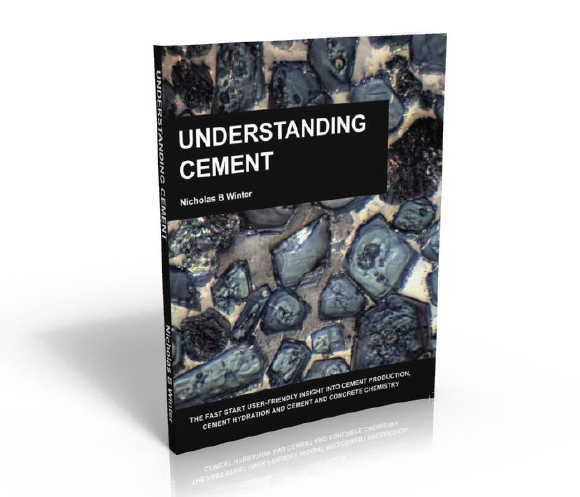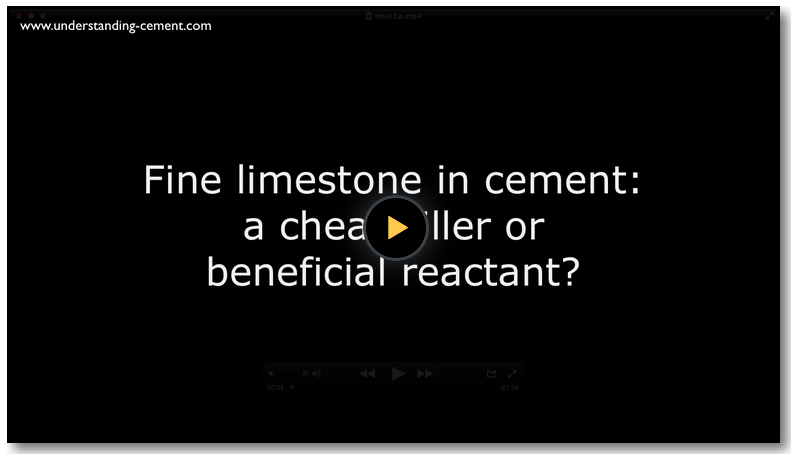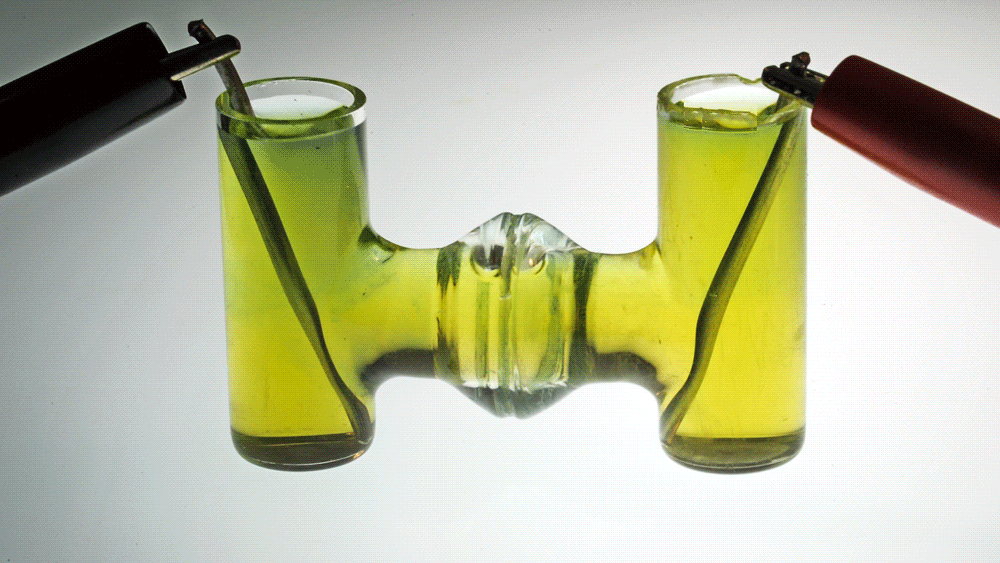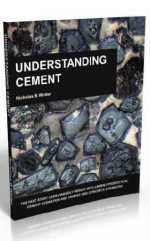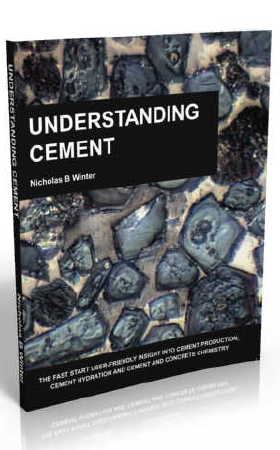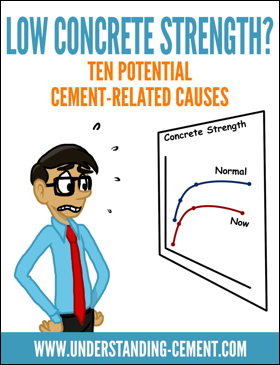Cement Milling
Cement milling is usually carried out using ball mills with two or more separate chambers containing different sizes of grinding media (steel balls).
Grinding clinker requires a lot of energy. How easy a particular clinker is to grind ("grindability") is not always easy to predict, but large clusters of belite due to coarse silica in the feed are difficult to grind. Rapid cooling of the clinker is thought to improve grindability due to the presence of microcracks in alite and to the finer crystal size of the flux phases.
Vertical roller mills (VRMs) are the main alternative means of grinding the clinker and are increasingly being used. For a quick introduction to VRMs see, for example, this advertisement on Youtube for an FL Smidth VRM.
As part of the grinding process, calcium sulfate is added as a set regulator, usually in the form of gypsum (CaSO4.2H2O). Natural anhydrite (CaSO4) may also be added.
Cooling is necessary to limit the temperature rise of the cement. This is done by a mixture of both air-cooling and water-cooling, including spraying water inside the mill.
Cement milling and gypsum dehydration
Because the cement gets hot due to the heat generated by grinding, gypsum can be partly dehydrated, forming hemihydrate, or plaster of Paris - 2CaSO4.H2O. On further heating, hemihydrate dehydrates further to a form of calcium sulfate known as soluble anhydrite (~CaSO4). This is calcium sulfate with a trace of bound water in the crystal structure and it has a very approximately similar solubility in water at room temperature to hemihydrate, which in turn has a higher solubility than either gypsum or natural anhydrite.
The different forms of calcium sulfate that may be present in cement are:
Mineral name
|
Composition |
|
Gypsum |
Calcium sulfate dihydrate (CaSO4.2H2O) |
|
Hemihydrate |
Calcium sulfate hemihydrate (2CaSO4.H2O), |
|
Soluble anhydrite |
Gamma anhydrite (CaSO4·nH2O where n = 0 to 0.05) |
|
Natural anhydrite |
Beta anhydrite (CaSO4) |
The relative proportions and different solubilities of these various types of calcium sulfate, and of the different forms of clinker sulfate, are of importance in controlling the rate of C3A hydration and consequently of cement set retardation. Problems associated with setting and strength characteristics of concrete can often be traced to changes in the proportions of the different forms of calcium sulfate due to differences in temperatures during grinding. Variations in cooling rate of the clinker in the kiln and subsequent changes in the proportions or size of the C3A crystals may also have an effect on setting characteristics.
If the rate at which sulfate is supplied by the different sulfate salts exceeds the rate at which the clinker minerals, principally the aluminate phase, can react, the pore solution may become supersaturated with respect to gypsum. Crystals of gypsum form which cause the mix to stiffen in what is known as a false set.
Conversely, if the rate at which sulfate is supplied is insufficient to control aluminate reaction, the mix will stiffen due to the fomation of monosulfate crystals, or possibly of calcium aluminate hydrate; this is known as flash set.
In clinkers high in potassium, syngenite (CaSO4.K2SO4.H2O - calcium potassium sulfate hydrate) crystal formation can also cause a false set.
For set regulation, the most important feature of aluminate is not necessarily the absolute amount present, but the amount of surface which is available to water for reaction. This will be governed by many factors, such as the surface area of the cement, the grinding characteristics of the different phases and also the size of the aluminate crystals. Over-large crystals can lead to erratic setting characteristics.
Get a Better Understanding of Cement
Articles like this one can provide a lot of useful material. However, reading an article or two is perhaps not the best way to get a clear picture of a complex process like cement production. To get a more complete and integrated understanding of how cement is made, do have a look at the Understanding Cement book or ebook. This easy-to-read and concise book also contains much more detail on concrete chemistry and deleterious processes in concrete compared with the website.
Click here for more information
You are in Cement Milling:
The following pages have more details on clinker composition, reactions in the kiln and cement milling:
Cement notation / Clinker compositional parameters / Combinability / Reactions in the kiln / Bogue calculation
Check the Article Directory for more articles on this or related topics
